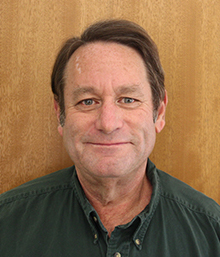It took a recent stroll after a bluegrass concert to make me fully appreciate Kansas City’s parkways and boulevard system. On a July night, a friend and I walked along West Meyer Boulevard, just west of Ward Parkway, south of the river. Towering trees, primarily oaks, shaded the street and made the dusk pleasant.
The sidewalk was wide, very wide, and set back quite a distance from the street. Houses sat deep in lots away from the street. In fact, the street was like a park.
The city was very livable.
I’ve driven along parkways and boulevards many times, and that’s nice. But walking along one, one that’s had time to blend with houses and the activity of people, that was somewhat new for me. I don’t recall anything quite like it in the Northland, although the broad sidewalk reminded me of the trail along the city’s Line Creek Parkway.
Meanwhile, this summer developers have opposed parts of Kansas City’s construction regulations along parkways and boulevards. Front and center in the discussions are new subdivisions planned in the Northland. That includes a developing area east of Interstate 29 and south of Missouri 92 that has new sewer and water services.
I hope the Kansas City City Council, city planners and park officials hold the line now and in future years. The place where I walked has been in place many years.
I’m guessing the trees are second growth, oak replacements for elms lost to Dutch elm disease in the 1950s and 1960s. But the basic, people-friendly design served well. We are building communities to serve not only ourselves but many generations to come.
There’s value to us and for those who will follow.
I was impressed with how kid-friendly Meyer Boulevard seemed. The broad sidewalk could accommodate walkers, joggers and young folks on a bike. It felt like a good place to play if I were many decades younger, but the wide street could also handle both automobile and bicycle traffic.
My station in life is such that I will never be able to buy and live in a house fronting a Kansas City parkway or boulevard, but that’s something to remember on election days: you don’t have to live there to enjoy them. Anyone can enjoy a drive, stroll, jog or walk along one. They also bolster property values for all. Plus, they attract business. The best firms locate in places with good schools and parks.
Platte County has good schools. Parks are a work in progress.
Remember that when we talk about standards for parkways and boulevards, we are not talking about all streets in a subdivision or a city. Rather, it is a broad, wide, framework of roadways. They are a relatively small percentage of the total acreage, the skeleton in the body. Within the framework are other places for more narrow streets, rule bending on commercial development, apartments, and single family housing.
But parkways and boulevards set a public tone. They are noticed by visitors to KC. Trails systems built in suburban towns can connect with them. A basic sidewalk leading into your average subdivision can connect with them, making all above average.
We’re not in the lease bit desperate for growth anywhere in the Northland. Platte County is noted as one of the fastest growing counties in Missouri, and an affluent one at that.
There’s time to build things well, but it takes voters willing to support elected leaders in a stand against developers placing short-term profit over long-term quality.
Bill Graham, who lives in the Platte City area, may be reached by e-mail at editor@plattecountycitizen.com.


